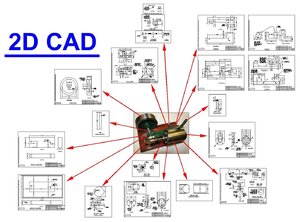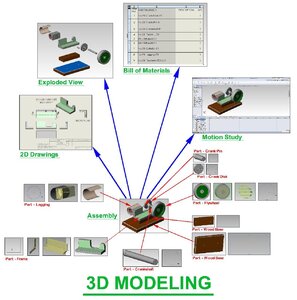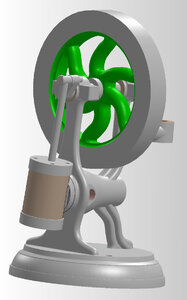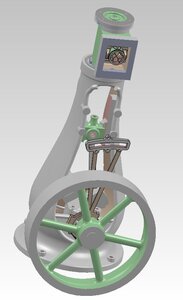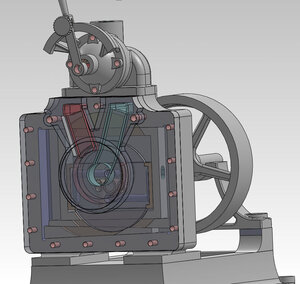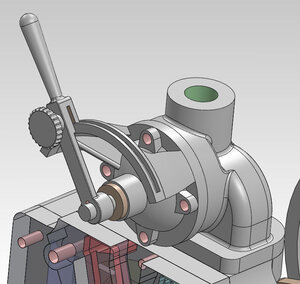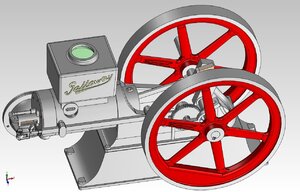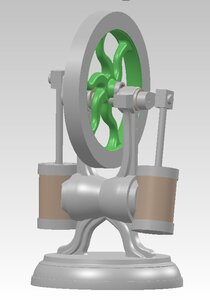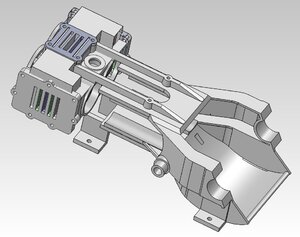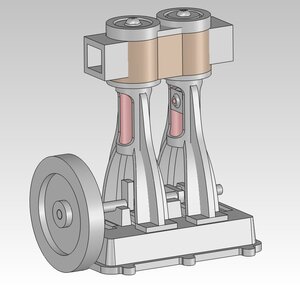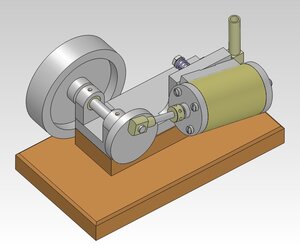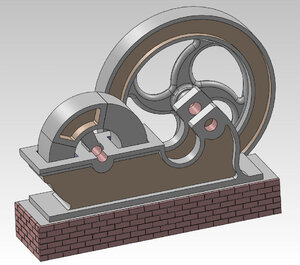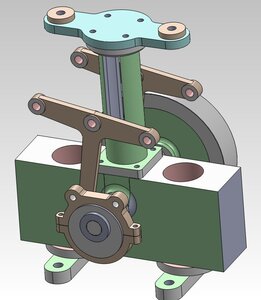Does that match how you think about it?
I found an online boat design program, but my knowledge of boat building and 3D modeling at the time were somewhat limited.
My boat building knowledge is still somewhat limited, but much better than it use to be.
My basic understanding of boat building is "nothing is straight", and that is a bit of a problem.
I discussed planking a boat with the boat building guy at an adjacent table at NAMES in 2019, and I wish I had been able to discuss more with him.
He had some serious boat models, and told me some good do's and dont's, which unfortunately I have forgotten now (should have written it down).
Seems like he said don't make the planking super thin at the ends, but stop it short, and squared off, or vice versa.
Perhaps I will seen him again if they ever have another NAMES.
So it would seem that 3D software and CNC would be the perfect mix for boat building, assuming you knew how to do both.
I don't do CNC, and have resisted doing things by CNC, just because I am into to many things already.
3D printing simplifies pattern making a lot, but again that assumes that you know how to do 3D modeling and how to modify a 3D model to make a pattern (two different things).
Compound curves can challenge 3D programs.
I use Solidworks, and sometimes it works, and sometimes the shape is too complex.
I have used lofted elipses for spoke sections, and loft the spoke along a non-linear path.
That gives a good approximation of how many of the old flywheel spokes were made.
For an engine that I only have a photo of, I lay a grid over the photo, and then model one part at a time, using the grid to maintain the correct proportion between parts and pieces.
Sometimes I don't know the size of the engine, but as long as the proportions are accurate, you can build a scale model; you just don't know the exact scale.
You can make an engine any size, even if you don't know the scale.
I look at one part at a time, such as the cylinder, and then have to figure out which plane to begin on, how to work out from that plane, and then where to put secondary planes, so that things like cylinder flanges will remain the same size if the cylinder size is lengthened.
Basically I find the fundamental shape of a part, cut a virtual section in the appropriate plane, and then draw that section in AutoCad.
I import the section into Solidworks, and then use that to begin the model.
It is much faster for me to do 2D work in AutoCad than in the 2D part of Solidworks.
When I began 3D work, I generally made sections that were too complex, and thus had trouble modifying them later.
Now I keep my sections as simple as possible, and use more sections that are simple.
If I have a problem with one section, and that section is simple, then there is little chance of the other parts of the model not working correctly.
I don't really do rendering, and I guess because I did not buy the render package with Solidworks.
I have done some rendering in Alibre.
Generally I don't need renderings, since I build the engine and can look directly at that.
Renderings do look nice if done correctly, and they look a lot better than just the plain 3D model.
Sometimes people go overboard with rendering, and it looks too shiny and unrealistic (almost plastic-like).
Once each part is complete, I start an assembly, and test the motion of each part as I add them.
If you wait and assemble all the parts at the end, then you may discover multiple problems that can be very difficult to troubleshoot.
I run an engine in simulation to make sure there are not conflicts.
Solidworks is extremely picky about assemblies that have motion in simulation, and that is a good thing I guess, because it you can get it to run in simulation, then it will definitely run in the real world.
Then I create 2D drawings in Solidworks, derived from the 3D models, and import that back into AutoCad.
Again, I can control 2D far better in AutoCad.
From an assembly I can create an exploded view.
I really don't use Bill of Materials, but instead generate that manually, but it is a powerful feature if you take the time to set it up correctly.
3D modeling is nice because I can generate the model for one engine, and then 3D print that engine at multiple scale factors.
Some folks like larger engine sizes, and some prefer smaller engines due to the limitations of their lathe and mill.
I suppose you could 3D print all the parts for a boat, but they would be in plastic, not wood.
So I see the need for CNC in order to make a wood boat (many/most boat models seem to be made with wood).
So its as simple as that.
I told a buddy of mine "it would be easy to cast that engine yourself; all you need to do is build a foundry".
His reply was "yes, and I could easily teach a snake to tap dance, after I got the shoes on".
.





